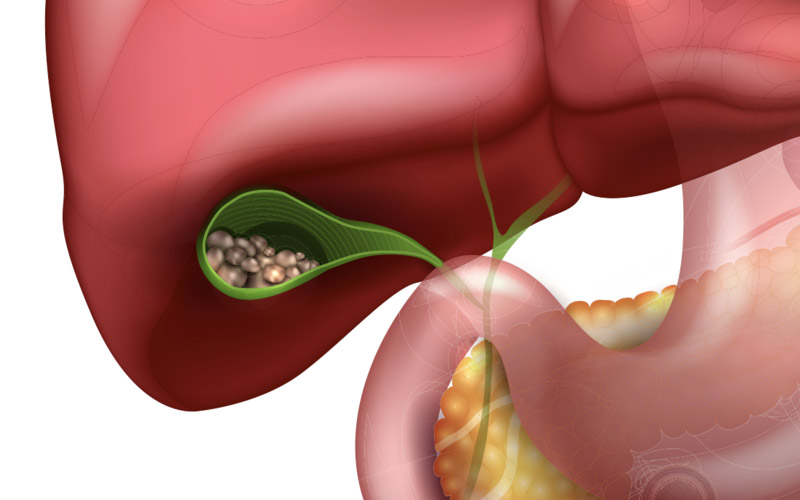
The gallbladder is a sac where the bile produced by the liver is stored and is an inverted pear-shaped organ attached to the liver. With the entry of food into the digestive system, the hormone called “Cholecystokinin” is secreted and allows the bile stored in the gallbladder to empty into the intestines.
In particular, bile that cannot come out as a result of the stone in the gallbladder blocking the gallbladder duct causes infection. Pain in the right upper abdomen, especially after a meal, is the most common symptom. Each attack may cause thinning of the gallbladder wall and in the following period, the wall may perforate and bile may flow into the abdomen.
False polyps may form with the condensation of cholesterol and bile salts in the gallbladder. There is no risk of cancer in these and their size usually does not change. Real polyps increase in size over time and carry a 1-5% cancer risk.
Weight loss is the most important symptom and the patient should be evaluated with further examination without losing time.
- Polyp larger than 10 mm
- Multiple polyps
- Stone larger than 20 mm
- Patients with small stones and gallbladder inflammation
- Small stones + presence of diabetes
- Porcelain gallbladder
Laparoscopic surgery is the most preferred method. The gallbladder and bile ducts are one of the areas with the most variations in the human body. Therefore, some changes may not allow closed surgery. If such a situation is encountered, open surgery can be performed.
Our patients start to drink water and feed with liquid food 4-6 hours after the operation. They are discharged on the 1st day after the operation and if necessary, they are called for drain control on the 2nd day and the drain is removed. Plenty of walking reduces back, shoulder and waist pain after closed surgery to a minimum. Fluid consumption is very important and 2.5 litres and above should be aimed. Fatty, spicy and prepared foods, eggs and derivatives, coffee, acidic drinks and alcohol consumption should be minimised.


